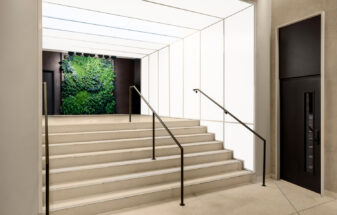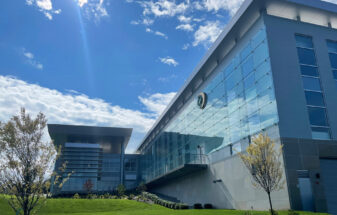New Window Featuring Bendheim’s Lamberts Art Glass Brings Life to Historic New York City Synagogue
New Silicone Lamination Technique Makes Art Glass Masterpiece Possible
Bendheim is one of the world’s foremost resources for specialty architectural glass. Founded in New York City in 1927, the fourth-generation, family-owned company offers a virtually unlimited range of in-stock and custom architectural glass varieties. Bendheim develops, fabricates, and distributes its products worldwide. The company maintains production facilities in New Jersey and an extensive showroom in New York City




